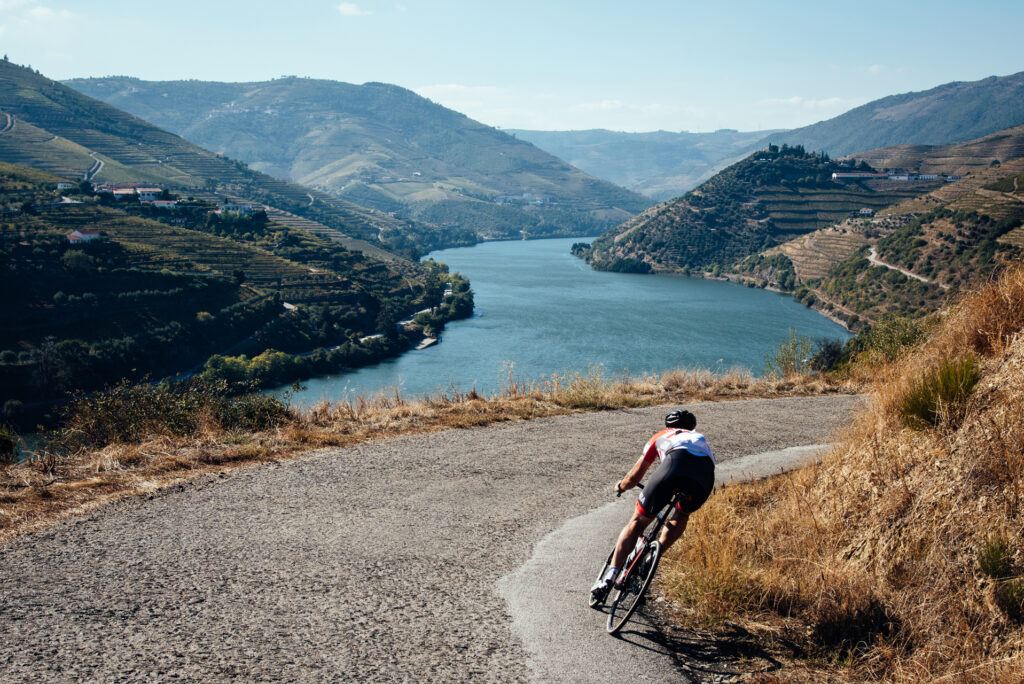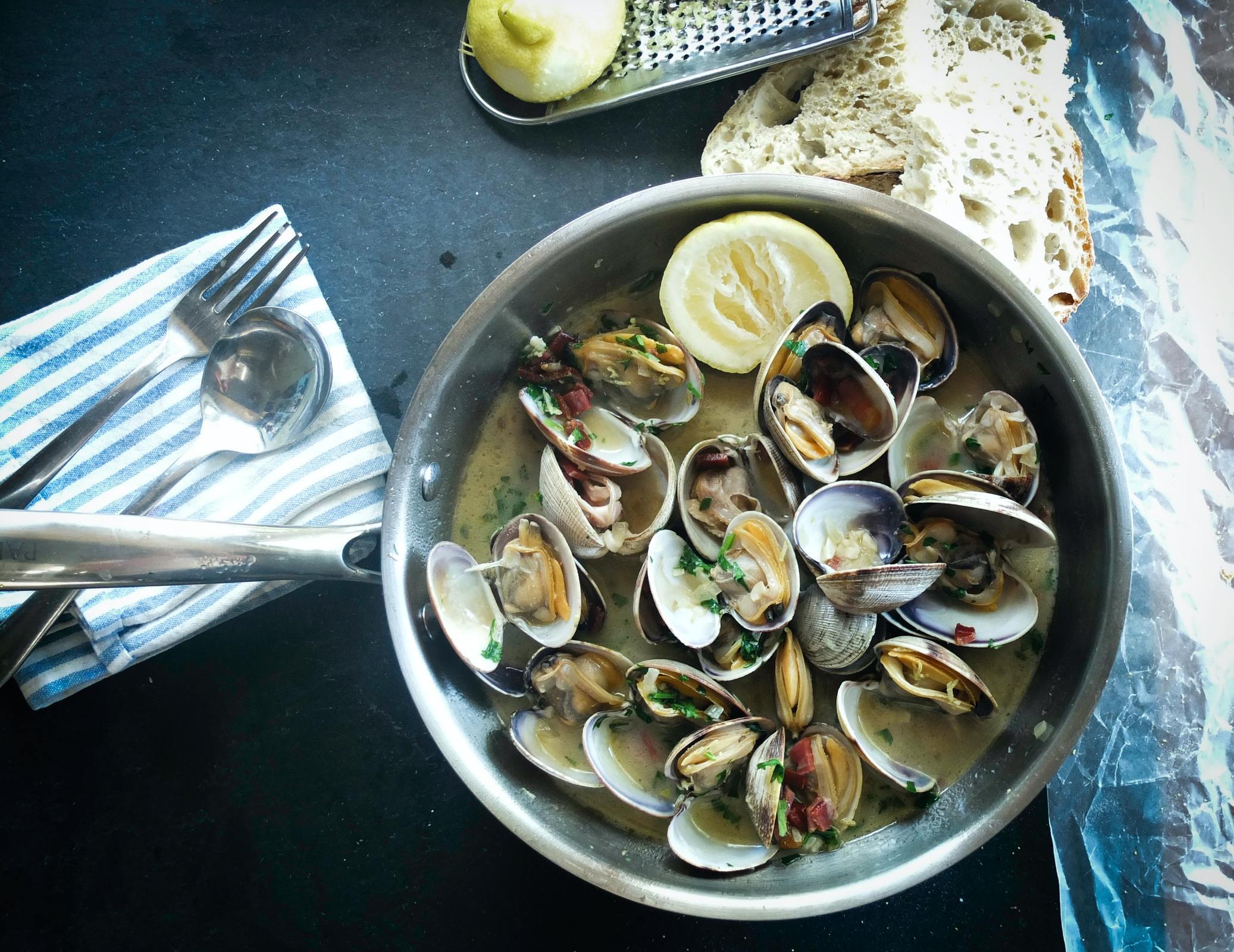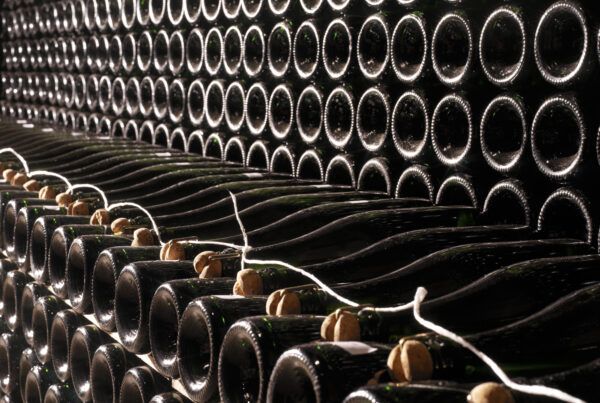From its humble beginnings to impressively creative innovations, Portuguese cuisine has always focused on simple techniques that highlight the natural flavours of quality ingredients. In such a small country, it’s impressive to notice that its food is so extensive that we could explore the country from north to south going from one region to the next without tasting the same dishes.
Bread, sausages, seafood, olives, and pastries remain staples throughout Portuguese cuisine, but as you travel across the country, you’ll see how different regions and terroirs have perfected their own methods of preparing these beloved ingredients.

The North
Rivalling Alentejo in the south as the richest and most diverse region of Portugal, Minho covers the area to the north and northwest of Porto. This is a special place where mountains meet the sea, and has some of the greenest areas of the country. Its fertile river banks are home to the most loved (or loathed, by some) freshwater fish species in the country, the lamprey. This fish-like eel even has its own dedicated festival of celebration in March, and a famous dish called Arroz de Lampreia (Lamprey Rice).
A much sought-after product in the Minho region is beef from the Barrosã breed of cattle, recognisable from their distinctive, long horns. The cattle occupy the highest lands, grazing on traditional pastures and marshes — a terrain and diet of grass, rye and often potatoes and corn that they are perfectly adapted to. The resulting flesh is dense and red, with a dark yellow marbling of fat and a nutty flavour.
Northeast of the Minho region you will find Trás-os-Montes e Alto Douro, where one of the most famous Portuguese exports — Port — is produced. Crossed by the mighty river Douro, the unique terroir is ideal for wine making generally, not just for fortified wines.

Olive oil is also produced here within 15 boroughs, who supply thirty percent of Portugal’s overall output. The special mountainous area provides a particular climate for this almost mythical product, with several varieties of olive flourishing across the region, many with protected status of origin (DOP) and four different grades of oil and varying levels of acidity. Olive oil has a significant impact on the local economy, and some have been awarded the highest distinctions in prestigious competitions, both national and international.
This beautiful area is filled with almond trees that, at the beginning of spring, have magnificent, fragrant displays of blossom, and a big celebration festival at the end of February, the Festa de Amendoeira em Flor. The almond also plays a role in the local diet, with the nuts dried and consumed throughout the year. The famous amendoas de Moncorvo (caramelised nuts from Moncorvo) can be found all over the region.
The cold, damp climate that dominates for much of the year also creates ideal conditions for wild mushrooms, including girolles and pieds de mouton, which in turn attract foragers and chefs. The famous dishes Cogumelos Guisados (Stewed Mushrooms) and Perdiz com Cogumelos (Partridge with Mushrooms) are fine examples of dishes created from the natural wild bounty. Most are distributed throughout the country’s restaurants, with some ending up on the international markets.

Central Portugal
Inland towards the northern end of central Portugal is Serra da Estrela, the area with the highest mountain of the country and home to indigenous breeds of sheep, Bordaleira and Churra Mondegueira. The superb milk they produce is turned into the famous creamy, soft cheese of the same name as the mountain range — one of the most famous sheep’s cheeses in the world.
Close to these mountains there is another cheese called Requeijão da Serra da Estrela, which is often eaten with local honey. This honey is smoother in texture and deeper and stronger in flavour than regular honey, due to the local flora that includes heather.
There is also olive production in this area for the varieties of galena, verdeal, cobrançosa and cordovil – all four of them with low acidity.
The mountain slopes are ideal fertile terrain for fruit trees such as apples, pears and cherries. Although most of the fruit that these trees bear end up on the international market, the cherries from Fundão are a true delicacy and find their way into restaurants and markets around the country.
River trout and honey are also prized in this region, with the dish Truta Abafada (Stewed River Trout with Spices) a speciality.
The river Dão, to the west of the mountains and towards the Atlantic, is home to the great wine region of the same name, often referred to as ‘the Burgundy of Portugal’. It is an area also renowned for its pastries, including the iconic egg-yolk-based sweets Ovos Moles de Aveiro (Soft Sweet Eggs). First made by Carmelite nuns in the 16th century, the pastry on the pastéis was said to be stretched so thin that the Bible could be read through it.

The South
Heading south are other highly fertile areas, including Ribatejo, which translates as ‘bank of the river Tejo’ (Tagus), and which crosses the province. It is the largest river in the Iberian Pen- insula and meets the Atlantic Ocean in Lisbon. The impact of the river on the local agriculture and cuisine is immense, with its huge banks home to important rice production, including the most well-known variety arroz Carolino, as well as supplying water for farming, in particular large fields of tomatoes, melons and even grapevines. River fish and eels are abundant and have made their mark on local gastronomy.
Further south, Alentejo is for the most part flat and covers the largest region of Portugal, bordering Spain to the east and the Atlantic on the west. It is home to the most highly prized pig of all, the free-range black foot, or Pata Negra, one of the Iberian Peninsula’s most sought-after gastronomic treasures. The pig is acorn-fed and roams in the oak forests on the border with Spain, a diet and lifestyle that accounts for its exceptional flavour and high price. It is here that the strongest charcuterie culture of Portugal exists, including the making of chouriço (chorizo), paiolas (a traditional sausage) and presunto (cured ham).

The region also enjoys an outstanding variety of sweet pastries, most of them originating, as in other parts of the country, in convents. Most nuns in medieval Portuguese convents didn’t end up there due to spiritual calling. The convent population consisted of the second daughters of the rich, single heiresses, widows and orphaned teenagers with a fortune behind them. Many women even had their maids with them in the convent. These were posh ladies. The maids were crucial to the invention of the convent sweets, as most of them were already used to cooking in sophisticated environments.
The nuns would use the surplus of egg yolks (the whites being used for export and as a purifier in wine production), plentiful native almonds and the easily accessed imported sugar to create rich sweets. Convent sweets were an elite product and so more egg yolks and less egg whites were used, because the yellow colour was very appealing — the nuns used to sell and make money out of the sweets. There were other convents that cooked sweets that wouldn’t be as rich and sophisticated — popular sweets — because they couldn’t afford the same ingredients.
With its drier and hotter climate, southern Portugal has always seen the practice of air-drying fish as a means of preservation. Salt production in the Algarve, home to some of the cleanest mineral salt there is, extracted using ancient methods, has played a major part in this curing process, with muxama (cured tuna) and polvo seco (sun-dried octopus) to name a couple.
With its long coastline, Portugal offers some of the most remarkable diversity of quality fish in the world, and is also home to some of the oldest fishing methods — now no longer applied due to sustainability issues — where two boats would tie nets between them and be pulled ashore by bulls, cows or human strength. Some of the most iconic Portuguese dishes have emerged from this rich coastline, including Caldeirada de Peixe (Fish Stew) and Arroz de Marisco (Seafood Rice) and, of course, the iconic sun-dried fish of Nazaré, so embedded in local customs.
The Islands
The archipelagos of Madeira and the Azores offer something else altogether. Madeira, with its tropical climate, produces the majestic Madeira wine, as well as outstanding fruits, and has a gastronomy that blends tropical resources with deep tradition.
The Azores, a volcanic conglomerate of islands, is home to vast green pastures ideal for grazing, providing high-quality dairy for cheese making. The Azores is also where you will find the famous Cozido da Logoa das Furnas (‘Furnace’ Stew), a dish of various meats and vegetables that are slow-cooked in a special pot dropped into volcanic hot soil, resulting in its unique flavours.
Naturally, there is a rich supply of seafood and fish on the islands — some of the best in the world — including giant squid, flat-head lobsters and tuna.

Want to find out more about this trip in 2023? Why not book a call with us?
















